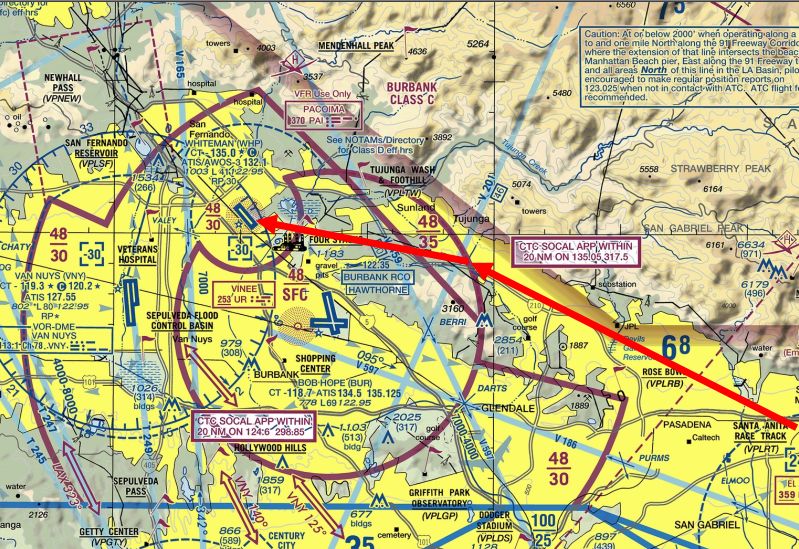VWGhiaBob
Line Up and Wait
- Joined
- Mar 17, 2013
- Messages
- 884
- Display Name
Display name:
VWGhiaBob
So here's a situation where I didn't know what to do. Hopefully I did the right thing.
I was on flight following with ATC from Big Bear to Whiteman. ATC handed me off to Burbank just as I crossed into their airspace. I requested transition, but the controller was extremely busy dealing with an inexperienced pilot having a tough time, plus a lot of other traffic. I continued on course.
When it became clear I was not going to hear from him quickly, I decided to continue a bit longer, as...after all...I was on a discreet code and an ATC handoff.
Technically, I did not have "2 way communication" until well into his airspace. I was about to execute a 180, when he came on, talking as fast as he could and cleared me, with an immediate rapid descent request to 2000'.
As I exited the airspace, he thanked me for the quick response. I don't feel the need for an ASRA, but wondering if I did the right thing.
So...if you were handed off too late to enter Class C with two way communications and the controller was too busy to talk to you, would you turn around immediately, or would you, as I did, continue a bit longer after requesting transition and THEN turn around as the airport got closer?
I was on flight following with ATC from Big Bear to Whiteman. ATC handed me off to Burbank just as I crossed into their airspace. I requested transition, but the controller was extremely busy dealing with an inexperienced pilot having a tough time, plus a lot of other traffic. I continued on course.
When it became clear I was not going to hear from him quickly, I decided to continue a bit longer, as...after all...I was on a discreet code and an ATC handoff.
Technically, I did not have "2 way communication" until well into his airspace. I was about to execute a 180, when he came on, talking as fast as he could and cleared me, with an immediate rapid descent request to 2000'.
As I exited the airspace, he thanked me for the quick response. I don't feel the need for an ASRA, but wondering if I did the right thing.
So...if you were handed off too late to enter Class C with two way communications and the controller was too busy to talk to you, would you turn around immediately, or would you, as I did, continue a bit longer after requesting transition and THEN turn around as the airport got closer?
Last edited:

